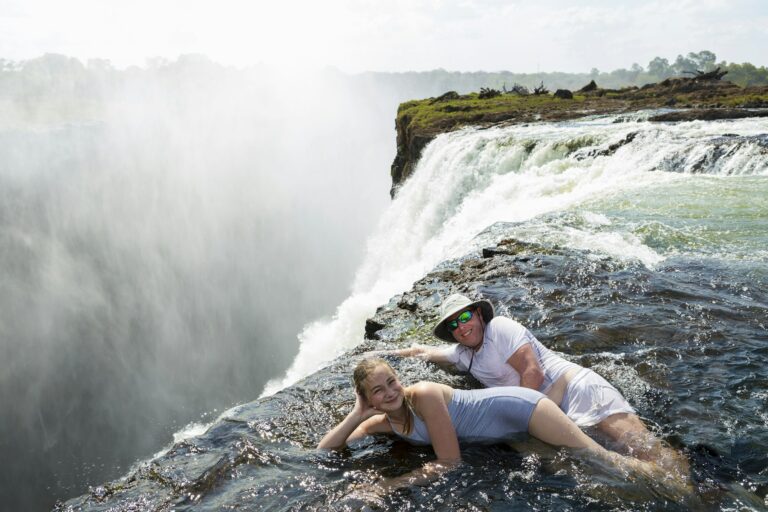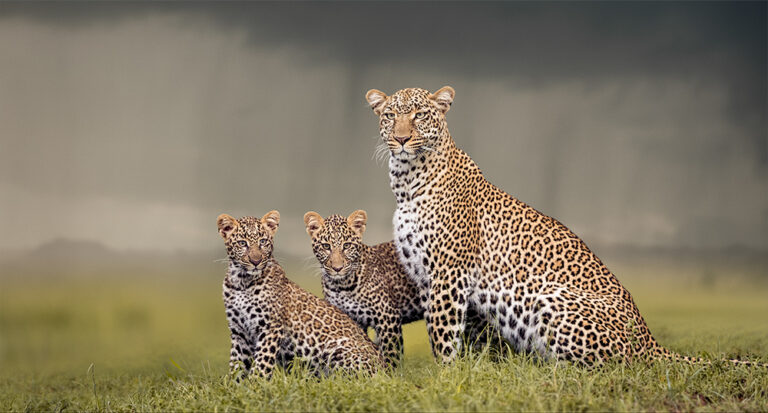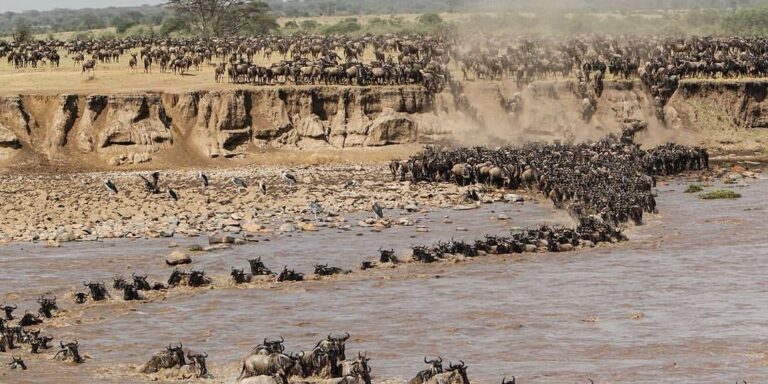The Great Wildebeest Migration, one of nature’s most astounding spectacles, is a must-see for safari enthusiasts. Each year, millions of wildebeest, along with zebras and antelope, travel in a massive loop through Tanzania and Kenya in search of fresh grazing grounds. This migration offers unforgettable moments—from thrilling river crossings to dramatic predator-prey interactions. Here’s everything you need to know for a Wildebeest Migration Safari in East Africa with Cats of Africa Safaris.
1. What is the Wildebeest Migration?
- The Great Migration is an epic journey of over 1.5 million wildebeest, joined by 200,000 zebras and 500,000 antelope, as they move through the Serengeti in Tanzania and the Maasai Mara in Kenya. The migration cycle is driven by rainfall and the availability of fresh grass, creating a natural rhythm of life, birth, and survival.
2. Migration Calendar: When to Go
Each phase of the migration offers something unique. Here’s a seasonal breakdown to help you decide the best time to witness the migration:
-
December to March – Calving Season (Southern Serengeti, Tanzania)
- Highlights: This season takes place in the Southern Serengeti, where the wildebeest herds gather on the lush plains for calving. Around 500,000 calves are born over a few weeks, attracting numerous predators like lions, cheetahs, and hyenas, creating thrilling scenes of predator-prey interactions.
- Best Locations: Ndutu and Southern Serengeti regions
-
April to May – Moving North (Central Serengeti)
- Highlights: As the rainy season begins, herds start moving northwards through the Central Serengeti. The region turns lush and green, offering beautiful photographic opportunities with fewer tourists around.
- Best Locations: Central Serengeti, including Seronera Valley
-
June to July – Grumeti River Crossing (Western Corridor, Serengeti)
- Highlights: The herds reach the Grumeti River in the Western Corridor, facing their first challenging river crossing. Although not as intense as the Mara River, these crossings still provide exciting viewing opportunities.
- Best Locations: Western Corridor, Grumeti Reserve
-
July to October – Mara River Crossing (Northern Serengeti & Maasai Mara, Kenya)
- Highlights: July to October is the peak season for viewing the Mara River crossings, where thousands of wildebeest attempt to cross the crocodile-infested waters. This phase of the migration is both dramatic and unpredictable, offering some of the most iconic wildlife viewing.
- Best Locations: Northern Serengeti, Kogatende, and Maasai Mara
-
November – Return to the Serengeti (Southern Migration)
- Highlights: By November, the short rains begin, and the herds start moving back to the Southern Serengeti for the calving season. This transition period is a quieter time to observe the migration as it moves south.
- Best Locations: Serengeti National Park (Central and Southern regions)
3. Planning Your Migration Safari
- Timing and Duration: Plan your safari according to the specific phase of the migration you wish to witness. Typically, a migration safari lasts between 5 to 10 days, allowing time to see the herds and enjoy the diverse wildlife of the Serengeti and Maasai Mara.
- Accommodation: Choose camps and lodges close to migration hotspots. Many mobile camps move seasonally with the herds, ensuring close proximity to the action.
- Booking in Advance: The migration season is popular, so booking well in advance, especially for the Mara River crossing, is recommended for the best accommodations and experiences.
4. Essential Safari Activities During the Migration
- Game Drives: Daily game drives provide front-row seats to the migration. Dawn and dusk drives offer incredible lighting and an active wildlife scene.
- Hot Air Balloon Safari: For a breathtaking perspective, take a hot air balloon ride over the Serengeti. Floating above thousands of wildebeest offers an unmatched panoramic view of the migration.
- Guided Bush Walks: Walks in specific areas of the Serengeti and Maasai Mara allow you to get a closer look at the environment and learn about the ecosystem.
- Cultural Visits: Visit local Maasai communities to learn about their culture and lifestyle, gaining insight into the connection between local tribes and the land.
5. What to Pack for a Migration Safari
- Clothing: Neutral-colored clothing, comfortable layers, and lightweight jackets are best. Pack long sleeves and pants for sun and insect protection, and bring a warmer jacket for cool mornings and evenings.
- Camera Equipment: A good DSLR or mirrorless camera with a telephoto lens (200-400mm) is ideal for capturing wildlife. Don’t forget extra memory cards, batteries, and a dust-proof camera bag.
- Binoculars: Essential for spotting animals in the distance, especially during river crossings or predator sightings.
- Personal Essentials: Sunscreen, insect repellent, a hat, and sunglasses are must-haves for safari days. A reusable water bottle is also essential to stay hydrated.
- Field Guide: Consider bringing a field guide to East African wildlife to help identify animals and birds, adding depth to your experience.
6. Why Choose Cats of Africa Safaris for Your Migration Experience
- Expert Local Guides: Our guides know the migration routes, animal behaviors, and best viewpoints, ensuring you’re in the right place at the right time.
- Exclusive Locations: We offer access to prime locations along the migration route, minimizing crowding and maximizing your viewing opportunities.
- Luxury & Comfort: Our accommodations range from mobile camps to luxury lodges, all designed to give you the best experience in comfort and authenticity.
- Commitment to Conservation: By choosing us, you’re supporting sustainable tourism and conservation efforts that protect the ecosystems and wildlife of East Africa.
7. Frequently Asked Questions About the Migration
- Q: Is the migration predictable?
- The migration follows a general pattern based on rainfall, but exact timings can vary. Our local guides track the herds closely to keep you informed and adjust as needed.
- Q: Can I see the Big Five during the migration safari?
- Yes! The Serengeti and Maasai Mara are home to the Big Five (lion, leopard, elephant, buffalo, and rhino), which can be seen alongside the migrating herds.
- Q: What’s the best time for photography?
- Early mornings and late afternoons provide the best light for photography. A river crossing, if you’re lucky to witness one, also offers dramatic action shots.
8. Preparing for Your Migration Safari
- Physical Preparation: Safaris involve bumpy drives and early mornings, so ensure you’re prepared for some rugged conditions. While it’s not strenuous, staying active can help you make the most of every moment.
- Mental Preparation: Wildlife sightings vary daily, so approach your safari with an open mind and a spirit of adventure for the best experience.
- Understanding the Ecosystem: Learning a bit about the migration cycle and Serengeti-Maasai Mara ecosystems enhances your appreciation for this natural wonder.
Experiencing the Great Migration with Cats of Africa Safaris is more than just a journey through Africa’s iconic landscapes—it’s an adventure that will leave you in awe of nature’s beauty and resilience. Join us on this unforgettable journey and witness the power, drama, and wonder of the world’s greatest wildlife migration.



